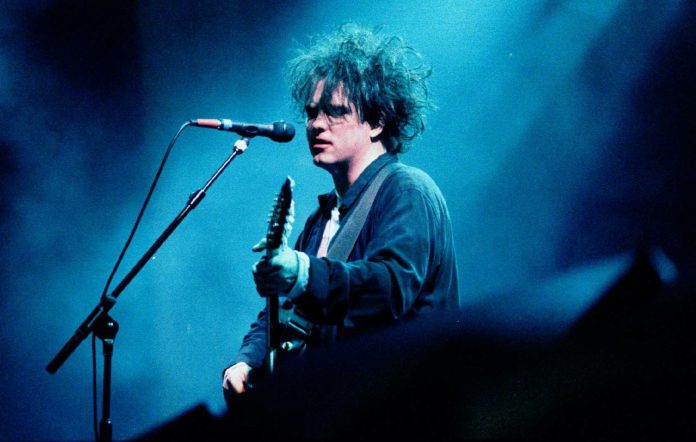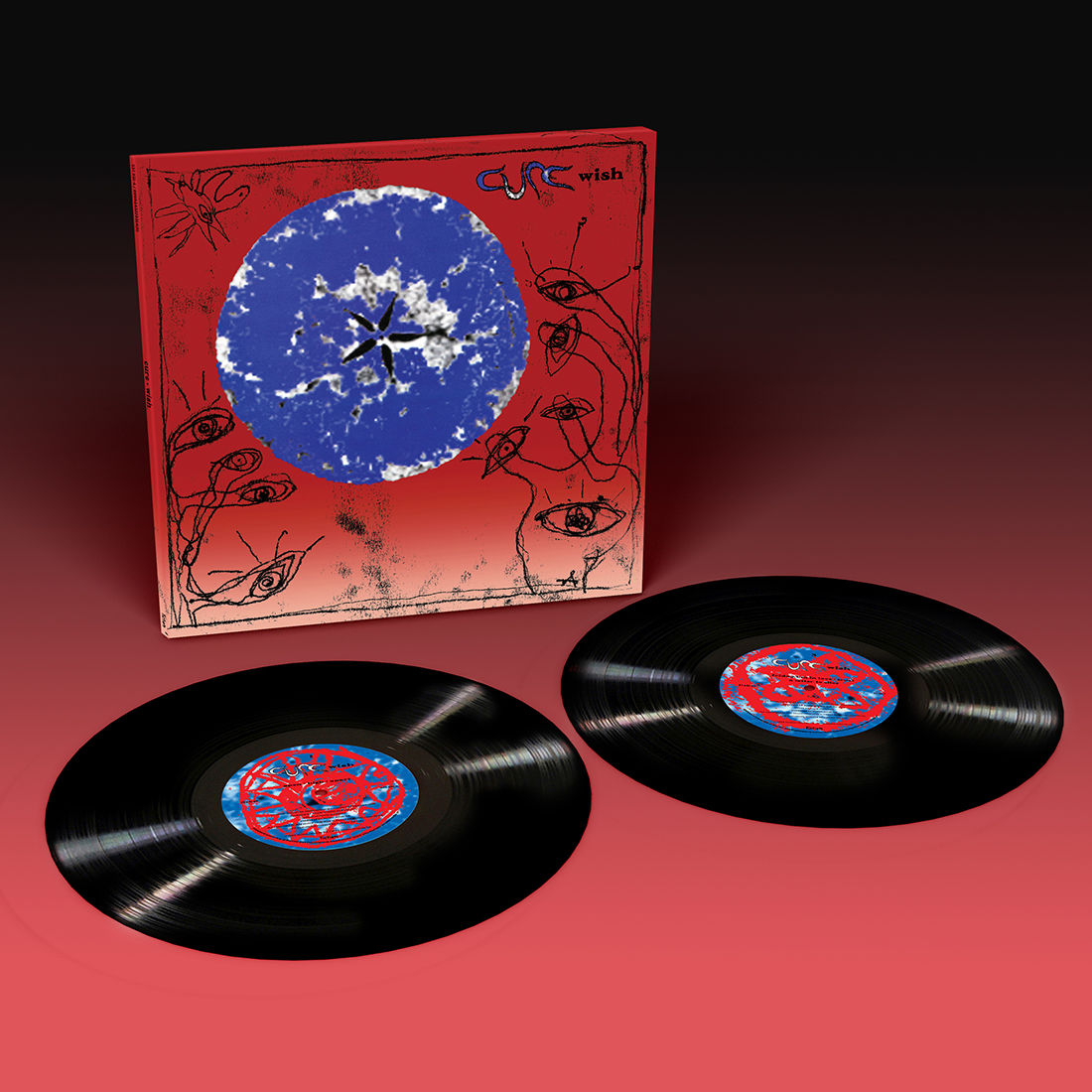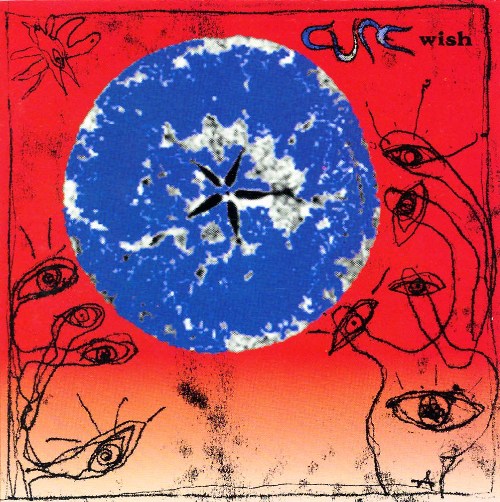The Cure's "Wish" finally back on vinyl after 30 years
It's Friday, but I'm not in love.
"Wish", by English gothic rock band The Cure, was released just three months before I was born in 1992, and while this album might coincide with the beginning of my time on this earth, for The Cure, "Wish" was the bookend on a fruitful period of pop dominance in the late 80s. The band that once assembled barren, bleak post-punk landscapes on albums like "Faith" and "Pornography" had, by 1985, with the release of "Head on the Door" transformed into a more lean, hook-laden power pop group. This marked a period of stability and popularity for Robert Smith and co., with the most consistent lineup of their career so far: a solidified membership of Pori Thompson on guitar, Simon Gallup on bass, and Boris Williams on drums.
The thematic climax of this period was of course 1989’s Disintegration, which offered a masterful fusion of the band’s early dark sound and their more recent pop sensibilities. While the album received lukewarm critical reviews at the time, it became immensely popular, particularly in the United States, and launched The Cure into the category of “stadium rock band”, selling out some of the largest arenas in the country, much to the disappointment of Robert Smith, who seemed rather overwhelmed by the band’s success.
On the back of this success, in late 1991 the band returned to the studio to record the follow-up to their most successful album to date. However Wish is not Disintegration 2.0, something that will become evident once you drop the needle on the opening track, ironically dubbed “Open”. A lot had changed in music since 1989, and the rise of alternative rock, and in particular the birth of shoegaze in the UK, had a profound effect on the sonic palate of the group. Further, according to interviews, this was one of the first Cure albums that was a truly democratic effort, with Smith releasing much of the dictatorial control he had exerted on the band’s writing method.

Smith and co. had clearly been listening to the work of peers such as Uk shoegazers My Bloody Valentine, and of course the unstoppable cultural force that was Nirvana in 1991. This influence (one that funny enough, was two-way, as many 90s shoegaze and alternative bands cite The Cure as an important influence) is very evident in just how guitar-driven much of this album is. In Guitar Player magazine Robert Smith remarked that “It's taken me a long time to come to terms with having guitar solos in our songs--I used to abhor them. I didn't like the whole wanky idea of stepping to the front and saying, "look at me!" But now it doesn't bother me, because it suits what we're now doing musically. It would have been dumb in the past to put in a guitar solo just because someone felt like playing one, but it would be equally dumb now to stop someone from doing one if that's what the song needs to make it more exciting.”
Other moments on the album are dominated by the band’s unique personal sound, such as “Apart”, with lush synths provided by the group’s new keyboard player Perry Bamonte. Sure, this album also contains the band’s poppiest works like “Friday I’m in Love” and “High”, but to call it The Cure’s “pop” record discounts the large diversity of sonic colors the listener is taken through on this album. Because of this jarring variety, I’ve always considered Wish somewhat of a psychedelic album, deviating from sweet hooks to synth driven ambient ballads with guitar riffs that are more about atmosphere than drive.
The sound on this record is thick, partially because of just how much instrumentation and overdubbing was included in the recording process. Newcomer Perry Bamonte didn’t just take over keyboard duties, but he also added a third guitar to the group. This coupled with copious vocal layering, and a plethora of instrumental odds and ends can be almost overwhelming. The album was recorded to analog tape, but with 48 tracks, meaning the mix is going to be a difficult monster to tame no matter what. Which brings us on to the new 30th anniversary edition.

Wish has been out of print on vinyl for 30 years, it was released in 1992 in limited numbers as a 2 LP album in the UK and Europe, but not in the US. The original release on both CD and Vinyl was mixed by Mark Saunders at Olympic Studios in London, while no mastering credit is given. For the 30th anniversary edition, the album has received a remastering crediting both Abbey Road’s Miles Showell, and Robert Smith himself (with notably no mention of half-speed in the promo materials). My North American copy was pressed at Precision in Canada while the European edition comes from Pallas. This is not the first of the band’s albums reissued by Rhino Records to receive a remastering credited to Smith, as all the band’s classic 80s albums have previously received the same treatment, but this is the first of the studio albums to be credited to Miles Showell as well.
As someone who owns original UK Fiction pressings of most of the Cure’s catalog, none of the Rhino/Robert Smith reissues have appealed to me with the exception of the 2 LP reissue of Disintegration, which finally received room to breathe compared to the 1989 original stuffed onto a single disc. For Wish, I do not own an original UK pressing, as it is a rare commodity, fetching $300+ on the secondary market. I do however own an original EU copy, cut and pressed by Polygram Record Services in Baarn, Nertherlands.
Comparing the two was interesting, as you quickly realize that this is not an audiophile production. Realistically you shouldn’t expect it to be, with 48 track tape and likely some intervention on behalf of early studio digital tech, there’s going to be some inherent sonic limitations. That said, the Polygram EU pressing wiped the floor with Abbey Road’s newfangled 30th anniversary remastering in almost every way. The remaster is a dynamically compressed affair, with a somewhat narrow soundstage and a glassy sheen that makes the upper midrange and lower treble rather grating and fatiguing to listen to. There is more bass present than the original, but it’s an opaque, bloated bass that lacks the definition of the more bass shy, but more accurately defined original.
On the track “From the Edge”, I noticed that the original pressing had much more transient snap in the drums, while Robert Smith’s vocals had much more clarity and detail. Vocals on the reissue were consistently one dimensional throughout the album which is a shame, because there’s quite a bit of vocal layering on these songs, and the remaster just doesn’t really let you hear it as well as it could. On “Cut”, you do really hear the deficiency in bass of the original pressing, but the remaster is not an improvement, as it sounds like turning up the bass on your car equalizer rather than providing any additional punch or depth.
By far the two biggest disappointments in this new 30th anniversary pressing are to a lesser degree the lack of instrumental separation, but primarily just how little dynamic range there is compared to the original mastering. On the original, songs like “Wendy Time” really come alive in certain instrumental sections because of dynamic contrast, and all of that is sucked out of the presentation on the 30th, leading to a very loud and bland experience.
I don’t know for sure if the blame for this disappointment lies at the feet of Smith, or Showell, but I do know that if anyone had bothered to listen to the original pressing of this album before approving this new cut (something Showell has admitted in interviews that he never does) they would have noticed that there was something wrong. It’s a shame really, because this was the most anticipated and long-awaited vinyl release from the band’s entire catalog, and the only affordable pressing available to most fans. You can certainly track down the EU copy I referenced, but it might set you back $125 or more. At roughly $40 can I recommend this new Abbey road cut? If you have always wanted to own this album on vinyl and don’t want to spend silly money, I think you should go for it, just don’t expect it to sound any better than what you will hear on streaming or a CD. For non-diehards, there are less financially wasteful ways to enjoy this classic album.












































.png)








